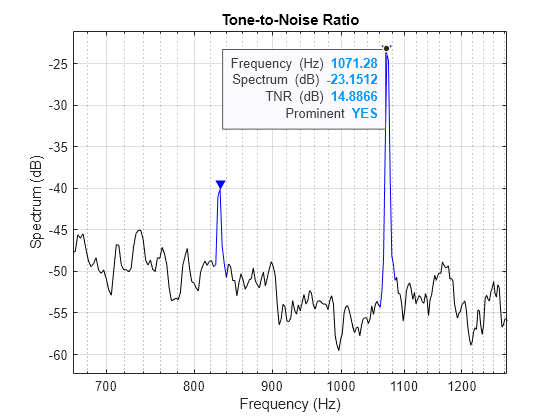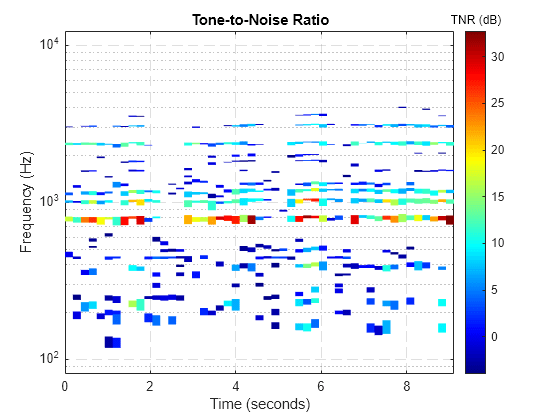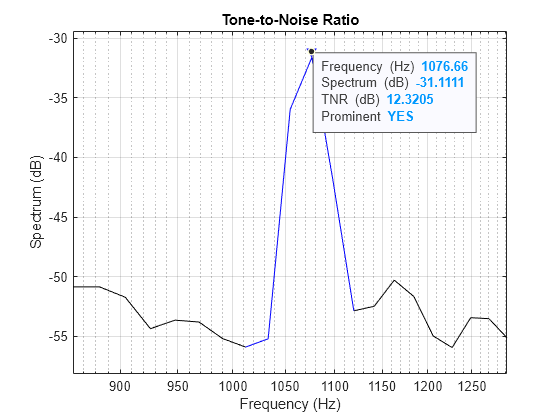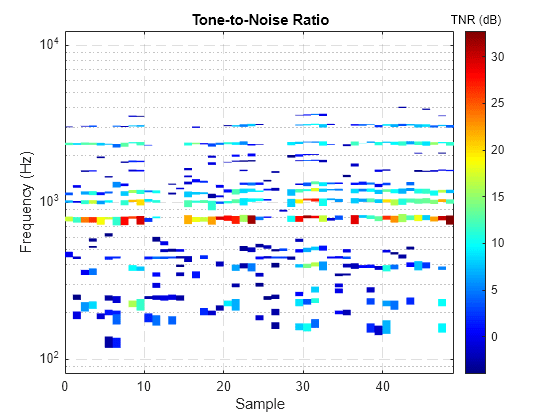acousticToneToNoiseRatio
Syntax
Description
[
also returns a logical vector specifying which tones are prominent according to
ECMA-418-1.tnr,tnrFreq,isProminent] = acousticToneToNoiseRatio(audioIn,fs)
[
detects tones and measures TNR in a time-varying signal. This syntax also returns a vector
of timestamps for each time segment in the input signal.tnr,tnrFreq,isProminent,timestamps] = acousticToneToNoiseRatio(audioIn,fs,TimeVarying=true)
[___] = acousticToneToNoiseRatio(___,
specifies options using one or more name-value arguments. For example,
Name=Value)acousticToneToNoiseRatio(x,fs,ReturnProminentOnly=true) returns only
the prominent tones detected in the input signal.
acousticToneToNoiseRatio(___) with no output arguments
plots the detected tones and their TNRs.
Examples
Input Arguments
Name-Value Arguments
Output Arguments
Algorithms
The acousticToneToNoiseRatio function detects the tones in the input
signal using the methods proposed in [1].
References
[1] Bray, Wade R. “Methods for Automating Prominent Tone Evaluation and for Considering Variations with Time or Other Reference Quantities.” The Journal of the Acoustical Society of America, vol. 123, no. 5, May 2008, pp. 3685–3685. DOI.org (Crossref), https://doi.org/10.1121/1.2935056.
[2] ECMA-418-1. "Psychoacoustic metrics for ITT equipment — Part 1 (prominent discrete tones)." Ecma International. https://ecma-international.org/publications-and-standards/standards/ecma-418/.
Extended Capabilities
Version History
Introduced in R2023b




